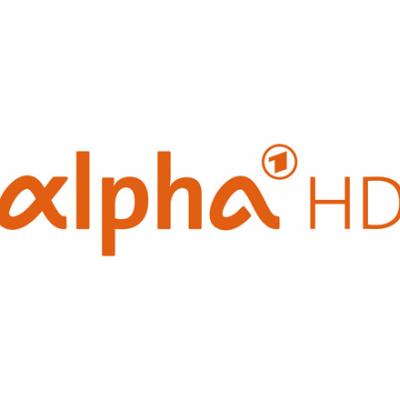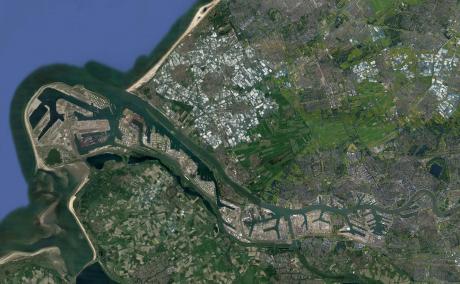637 Search Results
The Labyrinth Project: Co-existence, Extermination, and the Governance of Animals in Los Angeles, California
The Labyrinth Project is a collaborative inquiry into nature in Los Angeles. Lab members include faculty in The Institute for Society and Genetics alo

War, Inflation and Other Crises: Are You Changing Your Lifestyle? (in German)
More
Krieg, Inflation und andere Krisen: Stellen Sie Ihren Lebensstil um?
MorePutting Knowledge to Practice: “Reading” Agricultural Terraces in Medieval Palestine
This project critically examines peasant knowledge and practice in land use in the medieval Levant through a combination of archaeological and textual
Anthropocene Formations: Process Landscapes of Petromodernity
 No 80
The satellite image above shows the Port of Rotterdam, the biggest harbor in Europe. At Maasvlakte 2, an artificial island just off the coastline, the world’s largest tankers are able to dock. Around 100 million tons of crude oil reach Rotterdam each year, half of which are processed on-site in five petrochemical refineries, including Europe’s largest, the Shell refinery at Pernis. A pipeline system connects further plants in the Netherlands, Antwerp in Belgium, and the Rhine-Ruhr region of Germany, accounting for about 40 percent of the EU’s petrochemical production. In process landscapes such as these, the abstract concept of “petromodernity”—the ongoing historical period in which societies are based on the consumption of cheap energy and conveniences enabled by petroleum products—is present in all its complexity. By deciphering such exemplary geographies, our project contributes to a cultural theory of petrochemical modernity and the Anthropocene.
No 80
The satellite image above shows the Port of Rotterdam, the biggest harbor in Europe. At Maasvlakte 2, an artificial island just off the coastline, the world’s largest tankers are able to dock. Around 100 million tons of crude oil reach Rotterdam each year, half of which are processed on-site in five petrochemical refineries, including Europe’s largest, the Shell refinery at Pernis. A pipeline system connects further plants in the Netherlands, Antwerp in Belgium, and the Rhine-Ruhr region of Germany, accounting for about 40 percent of the EU’s petrochemical production. In process landscapes such as these, the abstract concept of “petromodernity”—the ongoing historical period in which societies are based on the consumption of cheap energy and conveniences enabled by petroleum products—is present in all its complexity. By deciphering such exemplary geographies, our project contributes to a cultural theory of petrochemical modernity and the Anthropocene.
Anthropozän-Formationen: Prozesslandschaften der Petromoderne
 No 80
Die Satellitenaufnahme oben zeigt Rotterdam, den größten Hafen Europas. An „Maasvlakte 2“, der künstlich aufgeschütteten Insel unmittelbar vor der Küste, können die weltgrößten Tanker anlegen. Jährlich gelangen rund 100 Millionen Tonnen Rohöl nach Rotterdam. Die Hälfte davon wird direkt vor Ort in fünf petrochemischen Raffinerien im Hafen verarbeitet – darunter mit der Shell Raffinerie in Pernis die größte Europas. Ein Pipelinesystem verbindet den Hafen mit weiteren Anlagen - in den Niederlanden, im belgischen Antwerpen und in der deutschen Rhein-Ruhr-Region - die zusammengenommen für rund 40 Prozent der petrochemischen Produktion in der EU stehen.
No 80
Die Satellitenaufnahme oben zeigt Rotterdam, den größten Hafen Europas. An „Maasvlakte 2“, der künstlich aufgeschütteten Insel unmittelbar vor der Küste, können die weltgrößten Tanker anlegen. Jährlich gelangen rund 100 Millionen Tonnen Rohöl nach Rotterdam. Die Hälfte davon wird direkt vor Ort in fünf petrochemischen Raffinerien im Hafen verarbeitet – darunter mit der Shell Raffinerie in Pernis die größte Europas. Ein Pipelinesystem verbindet den Hafen mit weiteren Anlagen - in den Niederlanden, im belgischen Antwerpen und in der deutschen Rhein-Ruhr-Region - die zusammengenommen für rund 40 Prozent der petrochemischen Produktion in der EU stehen.
The Geopolitics of Chinese Arctic Research
China is a relative latecomer to the Arctic, establishing its regional research program in the 1990s. In 2003, it opened its first research station. A
LMRG_Eiterjord_Research_Arctic.jpg, LMRG_Eiterjord_Arctic2.jpg
At the same time, confrontations between the United States and China have spilt over into the region and suspicions over China’s intentions in the nor
The Art of Judgement
The Art of Judgement explores how judgements are formed. In focus is the inherently dynamic nature of both assessments and decisions, as they are prod
Wilko Graf von Hardenberg
At the core of my various research interests lies the desire to understand how nature has been h...
More
Benjamin Steininger discusses our reaction to crises and catastrophes in the ARD-alpha daily talk
Go to recording